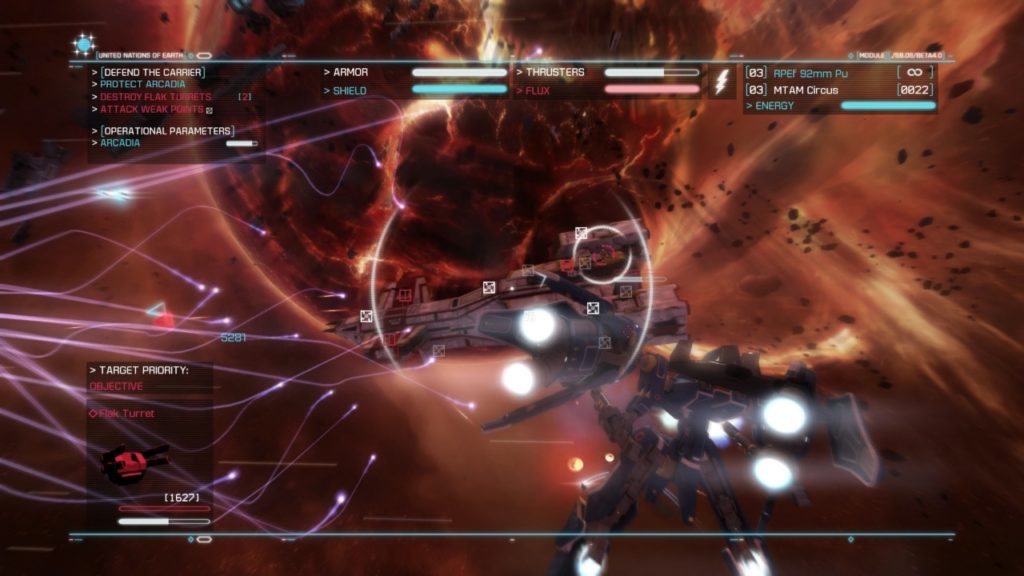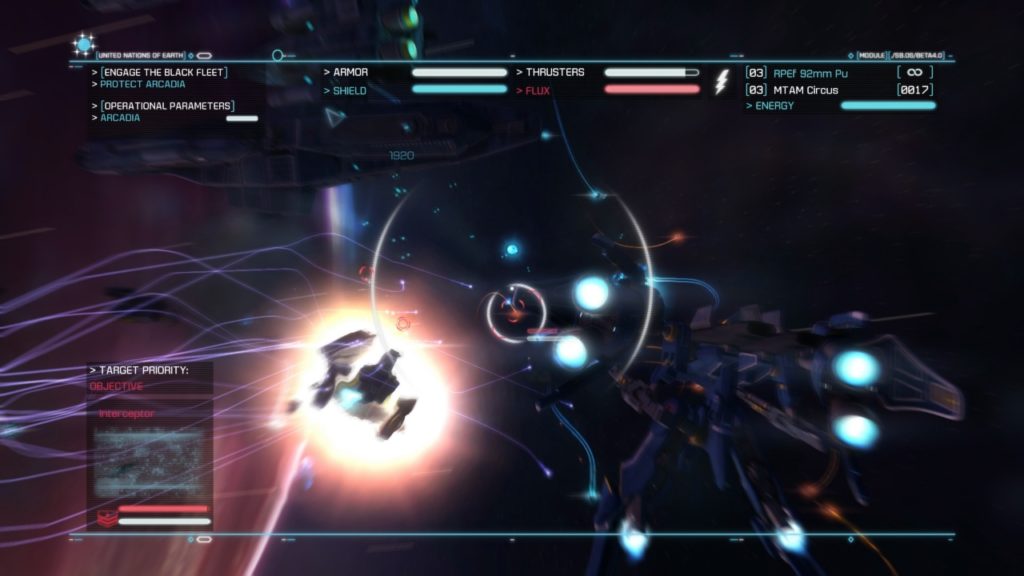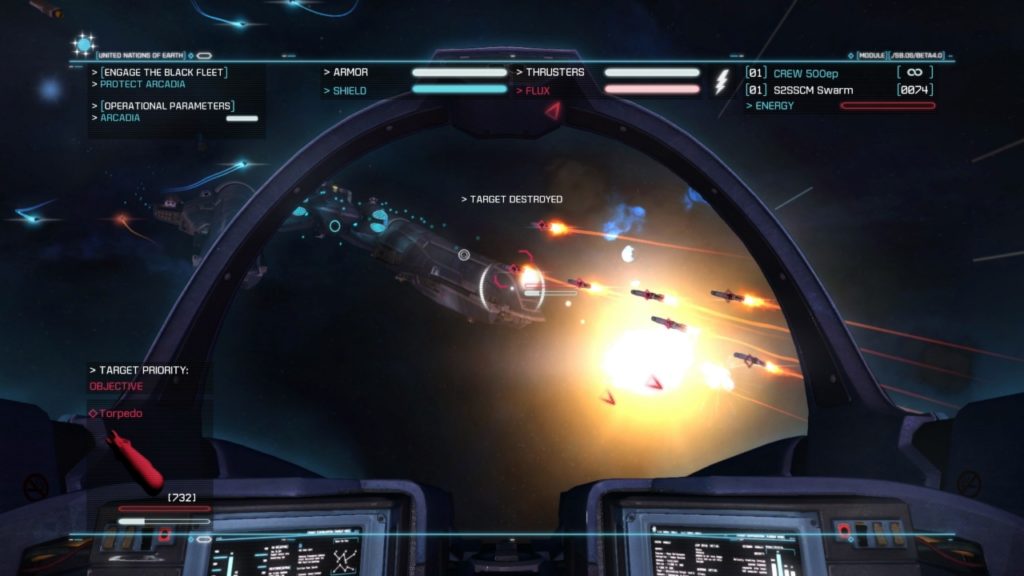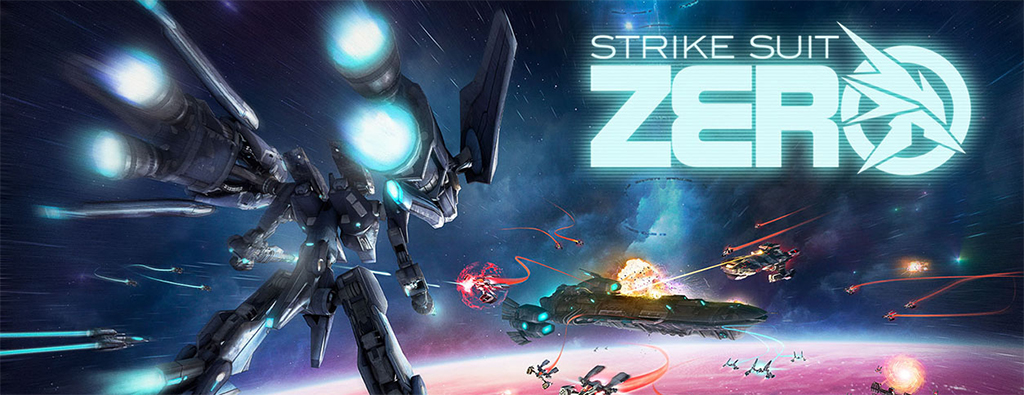Some games wear their inspiration right on their sleeves. If you ever wondered what a modern Macross/Robotech game would be like, long to see Mark Hamil reprise his role as Christopher Blair and have fond memories of flying the trench run from Star Wars then Born Ready’s Strike Suit Zero is the game for you.
Initially released on the PC back in 2013, to mixed reviews, the game was then given a serious overhaul, given the subtitled Directors Cut and re-released on PS4 and Xbox One in 2014. Now, five years later the initially divisive space sim is the latest indie darling to be ported to Nintendo’s little console that could.
After an alien beacon is found on earth in 2058 which enables scientists to develop warp technology, man finally takes to the stars proper and an age of mass expansion and colonisation across the galaxy begins.
Just over two hundred years later, those uppity colonists sick of taking orders from those stuffy earthlings and their pesky government plunge the galaxy into an intergalactic civil war. By 2299 Earth is on the ropes and the whole of known space is in turmoil.
Players take on the role of Adams, a rookie pilot fighting for earth who stumbles across the Strike Suit: a prototype starfighter with the ability to transform into a powerful humanoid mech. As you would expect much ass-kickery ensues as Adams takes the fight to those good for nothing off-worlders. That’s all you need to know about the game’s narrative, it’s simply there to frame the game’s action and little else.

You won’t mind though, because the battles you take part in are absolutely beautiful and have a wonderful sense of scale. Seeing hundreds of ships on either side battle against each other really is, well, pretty damn epic. You’ll also be happy to hear that allied ships aren’t afraid to get stuck in as well. The game’s friendly AI is genuinely helpful, providing support by taking out fighters and wearing down larger ships shields rather than just flying round in circles whilst you do all actual fighting.
Like a demented replicant, you too will see attack ships on fire off the shoulder of Orion. You’ll see them because you’ll be the one who probably set them on fire. As you barrel roll past waves of enemy fighters, fire your EMP at just the right moment to deflect enemy missiles, transform into a robot then retaliate with a barrage of your own, each streaming across the pitch black sky with a purple neon glow, the ensuing destruction lighting up the sky like a macabre firework display. Whilst the game’s Japanese-themed soundtrack by Paul Ruskay (Homeworld) punctuates the action with traditional choirs and booming kettle drums.
The game’s dog fights are exhilarating. Keeping track of enemies requires a great amount of care and skill as they do their damnedest to try and outmanoeuvre you. Once you’ve finally got a lock on one of them, nothing is more satisfying than the moment that missile hits and you go flying through the debris like some space-age flying ace.

Every ship you destroy fills up your flux meter, build up enough flux and you can transform into Strike Mode: AKA bad-ass mech mode, complete with a powerful cannon and the ability to fire silos of missiles at multiple targets raining neon hell down on the bastards, never fails to get old and is as rewarding and empowering as it sounds.
That’s not to say that Director’s Cut is easy, quite the opposite, it’s challenging and unforgiving, but you never feel as like the deck is stacked against you. That being said it would have been great if something could have been done to remedy the game’s infrequent checkpoints. Often times, you’ll spend half an hour battling your way through several objectives just to be thrown right back to the start of a mission. It’s not the end of the world but if you find yourself stuck at the later stages of a mission, frustration soon sets in.
However, when it’s in full flow it’s hard not to get sucked in. Each of the 13 main missions and five additional missions is well crafted, varied and substantial. One minute you’ll be repelling enemy fighters, the next protecting a damaged allied carrier from incoming torpedo fire or attacking huge enemy destroyers. Completing optional objectives will also net you vital upgrades to your ship that make some of the game’s later missions a lot less gruelling. As such, if you find yourself stuck, it’s well worth replaying early missions to get some extra firepower.

You’ll need them too as each mission is a battle hard fought thanks to clever enemy AI that does its best to repel your fire as well as outmanoeuvre missiles and mercilessly counter attacking if it finds an opening. This forces you to up your game and make every shot count, and your not so inevitable victory, all the more satisfying.
It’s impossible to talk about the Switch port of anything without talking about performance it seems, and though the game isn’t quite as pretty as its other console counterparts, with lighting is a little pared back, during my time playing it did run at a nice steady 60fps in both docked and handheld mode, and ultimately that’s all that really matters, when you’re barrel rolling away from enemy fire.
For old buggers like me who remember when space-combat sims reigned supreme, there’s a lot to love about Strike Suit Zero: Directors Cut. For the best part it successfully manages to recapture the giddy thrill of genre greats such as X-Wing and Wing Commander, just be aware that at time Strike Suit Zero also includes the keyboard slamming frustration associated with these titles as well, although in its defence it never quite gets to the hair-tearing heights of Tie Fighter’s escort missions. Despite this, if you’re up for the challenge I’d definitely recommend taking Strike Suit Zero for a spin.

